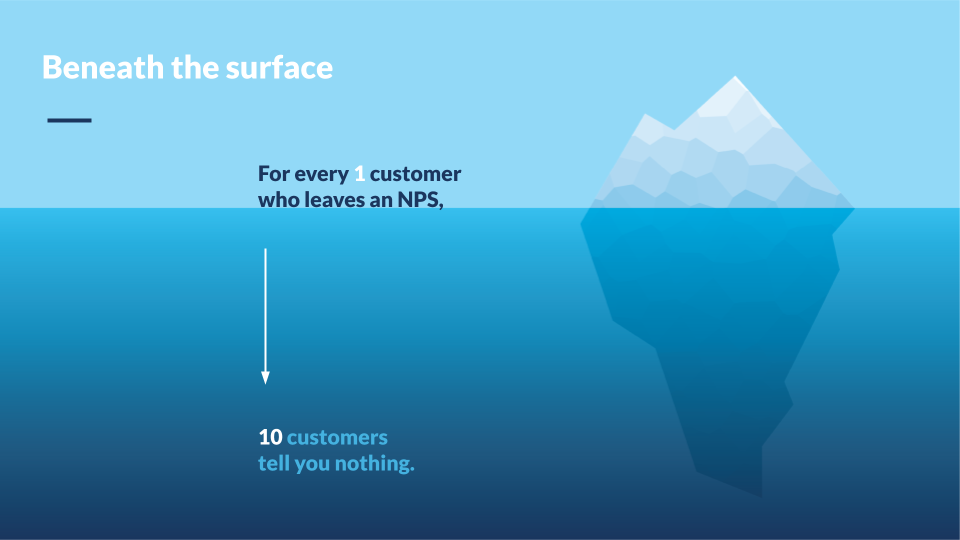
3 Hard Truths About Neglected Customers
[Updated 11/15/2021]
One-third of customers have experienced neglect at the hands of online retailers. Take a closer look at the many forms of neglect in the NOW era… and how customer neglect is impacting your business.
Nobody in business sets out to neglect customers. No CXO or CX leader starts their day thinking: “Who can I neglect today?”
However, considering the proliferation of the NOW customer and massive shift from in-person to digital shopping experiences… businesses have a glaring customer neglect problem.
And it’s costing them millions.
In a recent Simplr survey, we found that one-third of customers have experienced being ignored or left hanging by an online retailer. That’s… a lot of customers.
One doesn’t have to go far to find out how bad customer service experience impacts a business. A quick internet search would show you that every year businesses in the United States lose billions of dollars because of negative customer experience.
The financial services, for instance, receive high customer complaints. Bouncing checks, excessive credit card charges, loss of personal data, and failure to honor promises are only a few of the bank complaints that their call center gets on a day-to-day basis.
Ironically, the banking sector is among those with a high level of access controls and surveillance security. Yet huge errors still happen that can cause customers hundreds and thousands or even millions of losses. While an experienced accountant may easily spot errors during audits, an efficient customer service team can save an organization from serious trouble.
To get to the bottom of the customer neglect, let’s take a closer look at what’s fueling it, and how companies can stop it from happening in the first place.
What is customer neglect?
Put simply, customer neglect happens when a customer is actively ignored by people who work at the business they’re trying to engage with. In a traditional retail setting, this would involve not answering a customer’s in-person questions, or, if by phone, putting them on hold for an eternity.
Often this happens due to lack of or insufficient product knowledge, poor management of incoming calls, misleading price information given to customers, and communication barriers. This is why it’s so important for companies to have a well-trained team of customer service or technical support specialists. Mishandling of customer issues and calls can be avoided with the help of excellent problem-solving skills.
Today, customer neglect has become much more nuanced. A simple error in processing a financial transaction or payments can lead to a loss in sales, not to mention an unsatisfied customer.
Customer neglect still means a customer is being ignored, but it’s happening across a much wider (and more complicated) spectrum of customer experiences: delayed email responses, lack of live chat, unattended calls, unanswered social media DMs, full voicemail boxes, frustrated Yelp reviews, and so on.
Whichever form customer neglect is taking, one thing is painfully clear: an ignored customer is likely to never buy from you again. Even worse, they can tell people about their bad experiences from your company with just a quick tap into their smartphone.
Bad reviews travel so fast in this time and age of technology. Customers do extensive research before they deal with a certain company. They follow groups, join forums, subscribe to newsletters, or read a digital magazine. It’s for this reason that they can easily come across negative feedback about an organization.
The probability of your business shutting down is so high when you fail to deliver a satisfactory customer support experience. Even if the business manages to survive with the help of marketing as damage control, it may take time to fully recover the trust and confidence of the neglected customers. In the worst-case scenario, they will choose to support another business.
Therefore, learning to effectively engage with and take good care of your customers should be given importance just like how you would give importance to other types of partnership.
Do you really know where you stand with your customers?
Maybe you think that neglecting customers isn’t an issue for your company. As long as you have smart people in the business operations and your offered price is right, your market share and success are guaranteed. But that’s not how business is done nowadays. Customer success is key to the overall success of your business.
You may point to your “good-to-very-good” Customer Satisfaction Scores and NPS ratings. But those metrics rarely tell the whole story, especially when they linger in the “good enough” and not “exceptional” ranges. (Oh, and these are also considered “vanity metrics” by the majority of eCommerce CX leaders).
In fact, for every customer who leaves an NPS rating, 10 customers tell you nothing. Nada. That’s 10 people who had an experience with your brand, and you have no idea whether they loved it, hated it, or didn’t really care either way.
We like to depict those “Silent Ten” on an iceberg: They’re hidden, and they can do a massive amount of damage if you aren’t careful.

Your risk lies in what you don’t know about the customers who don’t give you feedback. Who could they be? Think about what you’re missing out by not knowing those 10 customers:
- According to American Express, Americans tell an average of 15 people about a poor customer service experience. If those neglected customers were unhappy, they’re likely spreading their disdain underneath your radar.
- What if they were hidden superfans? This customer may not be a vocal reviewer or take to social media to share their love, but they have all the (quiet) makings of a brand advocate. Are you neglecting to recognize and engage this customer and make the most of their fandom?
Here are some ways to avoid neglecting the ten neglected customers who didn’t give you feedback:
- Avoid using CSAT or NPS as the end-all metric for customer satisfaction. Metrics such as First Response Time and Rate of Repurchase paint a much clearer picture of where you stand with your customer base. Instead, make an effort to improve the way your customers are served. Careful planning and sound decision-making are crucial in creating an excellent customer experience. Encourage managers to think of ideas and submit a proposal on inspiring team performance. Because a happy team translates to happy and satisfied customers.
- Invest in live chat solutions that actively engage your customers in the moment. Email is a convenient way for your customers to reach you. But a live chat feature provides a real-time response, next to a telephone call, which makes it an attractive option for customers.
- Personalize responses. Customers want to communicate with real people. Although canned responses save time, especially when it comes to email correspondence, customer support agents should be able to think on their feet and approach a situation using the right information. Personalization promotes good feelings and a satisfactory resolution.
Customer neglect is happening 24/7
Online shoppers are on your site or app at all hours of the day. You’re bound to “neglect” some in the process, but few businesses understand how dire it is to repeatedly miss NOW customers in the moment… day after day (and night after night).
According to Shopify, peak browsing time for online shoppers is 5pm-12am EST. Neglecting to have a knockout strategy for engaging those customers (such as human-staffed live chat) is a surefire way to make those customers feel — you guessed it — neglected.
This creates a bad reputation for your business. Your customers can get the impression that they are being taken for granted. Such a negative opinion can easily spread to potential consumers and result in a big loss for your business. Once customers turn their back on your business, it would be very difficult to recover them. No good enough reason may make them come back.
If they’re not able to get an answer to a pre-sale inquiry in the evening hours, they risk getting distracted and not finishing the purchase or, worse, jumping over to a competitor’s site. What are they taking with them? Consider this:
- Customers who are engaged by a brand are 90% more likely to make a purchase.
A brick-and-mortar store wouldn’t pull all staff away from their highest-traffic hours… Why should online businesses?
WATCH NOW: From Ignoring to Engaging: How to Give Your NOW Customers What They Want

Customer neglect is costing you… big time
The exponential missed revenue of neglecting NOW customers is too big to ignore.
The NOW customer is heavily influenced by people in their own network and by genuine online reviews from strangers. In that vein, according to Qualtrics, 94% of consumers say a negative online review has convinced them to avoid a business.
That can pose some serious damage to a business that is actively (albeit unknowingly) neglecting customers with slow response times, lack of overnight staffing, and insufficient engagement. What would your CEO say?
On the flip side, NOW customers love talking about great customer experiences, too.
According to Motista, customers who feel an emotional connection with a brand have a 306% higher lifetime value and will recommend that brand 26% more than the average. The potential revenue a non-neglected customer could bring to a business over the course of a lifetime is exponential.
Don’t fall prey to unchecked neglect
Unchecked, customer neglect can be a potentially multi-million-dollar problem for online businesses. There are currently more ways than ever to neglect a customer as the demands of the NOW customer gets more demanding and companies expand their online presence with the help of digital advertising.
Leverage on your customer service team. Empower them with leadership and survival training to effectively build rapport and handle complaints. Provide the tools they need to quickly respond and easily solve customer issues. Many companies nowadays have large options of software to use in business operations.
Conduct business analysis to identify customer needs and areas of improvement in your support team. As your business and customers grow, you may need to plan for the implementation of expanded customer support and integration of wide range customer contact channels to include voice, email, text messaging, fax, etc.
Ever wondered if you’re neglecting too many customers? Contact Simplr today for a customer neglect assessment and ideas on how to eradicate neglect. Click here to find out why companies are thrilled to be a Simplr partner!